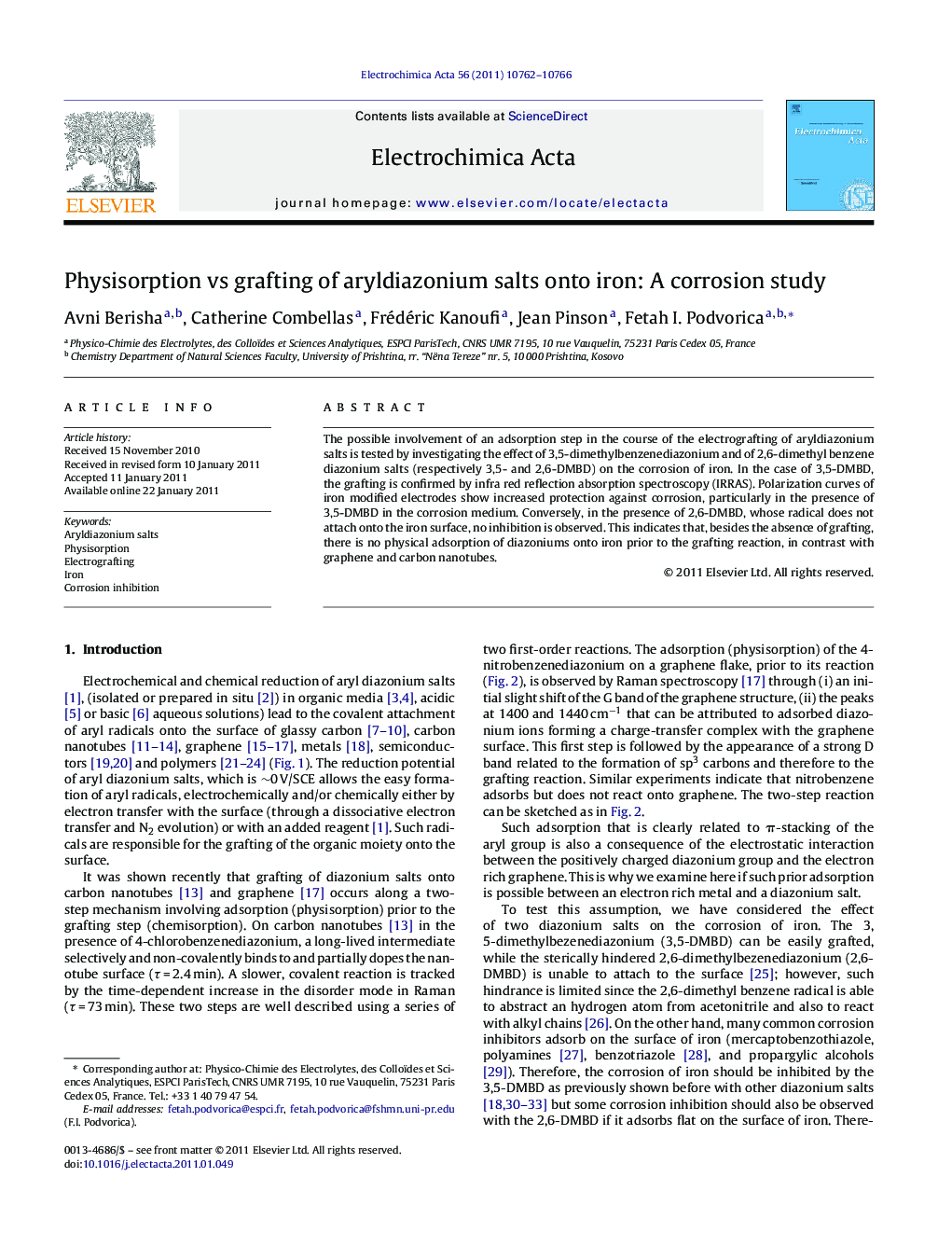| Article ID | Journal | Published Year | Pages | File Type |
|---|---|---|---|---|
| 190137 | Electrochimica Acta | 2011 | 5 Pages |
The possible involvement of an adsorption step in the course of the electrografting of aryldiazonium salts is tested by investigating the effect of 3,5-dimethylbenzenediazonium and of 2,6-dimethyl benzene diazonium salts (respectively 3,5- and 2,6-DMBD) on the corrosion of iron. In the case of 3,5-DMBD, the grafting is confirmed by infra red reflection absorption spectroscopy (IRRAS). Polarization curves of iron modified electrodes show increased protection against corrosion, particularly in the presence of 3,5-DMBD in the corrosion medium. Conversely, in the presence of 2,6-DMBD, whose radical does not attach onto the iron surface, no inhibition is observed. This indicates that, besides the absence of grafting, there is no physical adsorption of diazoniums onto iron prior to the grafting reaction, in contrast with graphene and carbon nanotubes.
